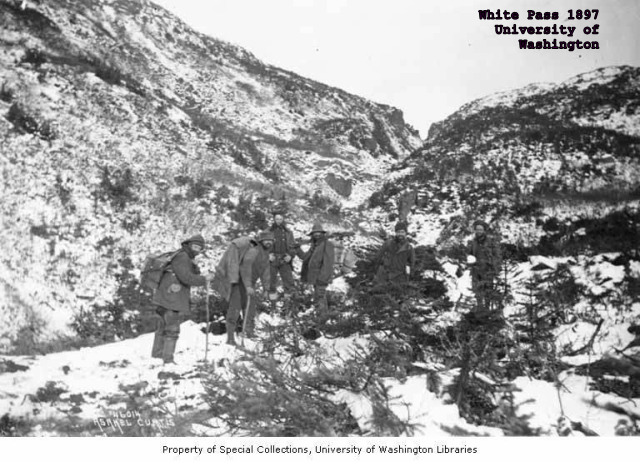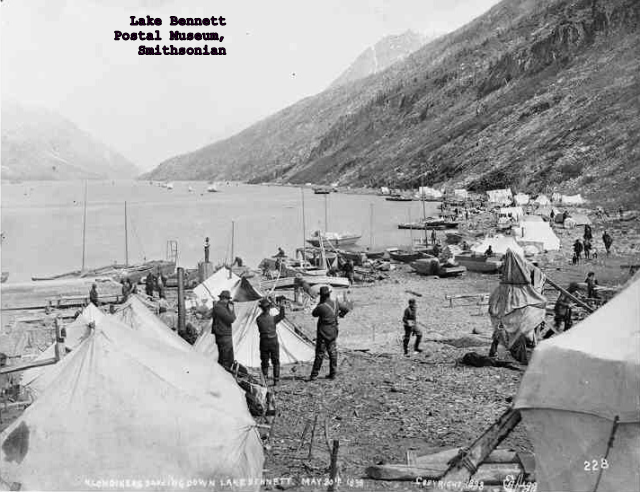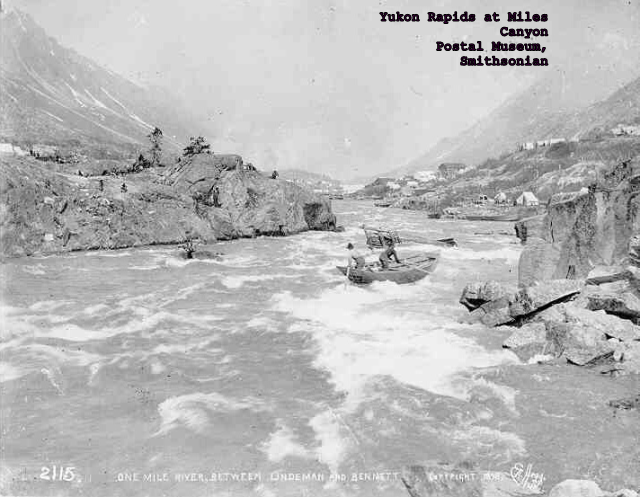
A stampede of gold seekers descended on Skagway, Alaska in 1897. As the crow flies, Caribou Crossing and Lake Bennett lay just a few miles from Skagway and from Lake Bennett the Yukon River flowed north to the Gold Fields. No, as they say, big deal.
Unfortunately, the stampeders weren’t crows, and the “few miles” to Lake Bennett climbed thousands of rugged feet–from sea level to the top of the coastal range that towered above Skagway. The stampede pushed up through Chilkoot Pass and White Pass.
And some of the rushers made it to Lake Bennett.

Triumphant end of story? Not hardly. Ahead of them lay twenty-six miles across Lake Bennett, two and a half miles through the narrows at Carcross, nineteen miles down Tagish Lake, five miles across Marsh Lake and finally onto the Yukon. Twenty-five miles downstream from Marsh Lake, the Yukon boils through the Whitehorse Rapids at Miles Canyon—the single most dangerous portion of the river passage. Survive all that and it’s still several hundred river miles to Dawson City on the Klondike.
Along the shores of Lake Bennett, frantic boat builders stripped every bit of forest they could reach. In early May of 1898, a motley flotilla of seven thousand boats and rafts lay poised to go. Builders worked on as many as a thousand more.
On May 29th, word reached the would-be miners that the ice down river had broken. The incredible flotilla–canoes, scows, rafts and barges–burst like racehorses from their gates out into Lake Bennett, surging toward the narrows at Carcross. Attrition, of course, began immediately. Many of the vessels in the ragtag flotilla fell apart before they even got across the lake.

In the end the lucky ones made it to Lake Lebarge and through the final leg down the Yukon to the crowded docks at Dawson City, but the path from Lake Bennett was littered with the detritus of those who tried and failed.
Dawson City became, for a time, the largest city north of San Francisco. Saloons, dance halls, butchers, clothiers and blacksmiths lined its streets. But the the carnival atmosphere lasted but a few months in 1898.